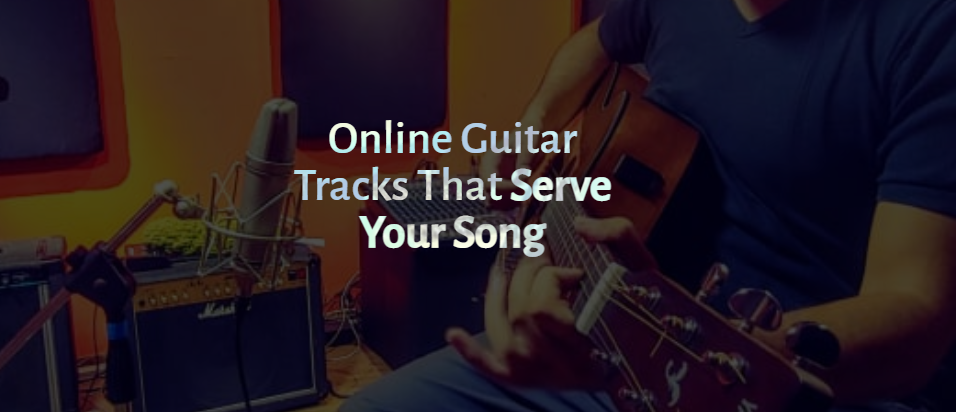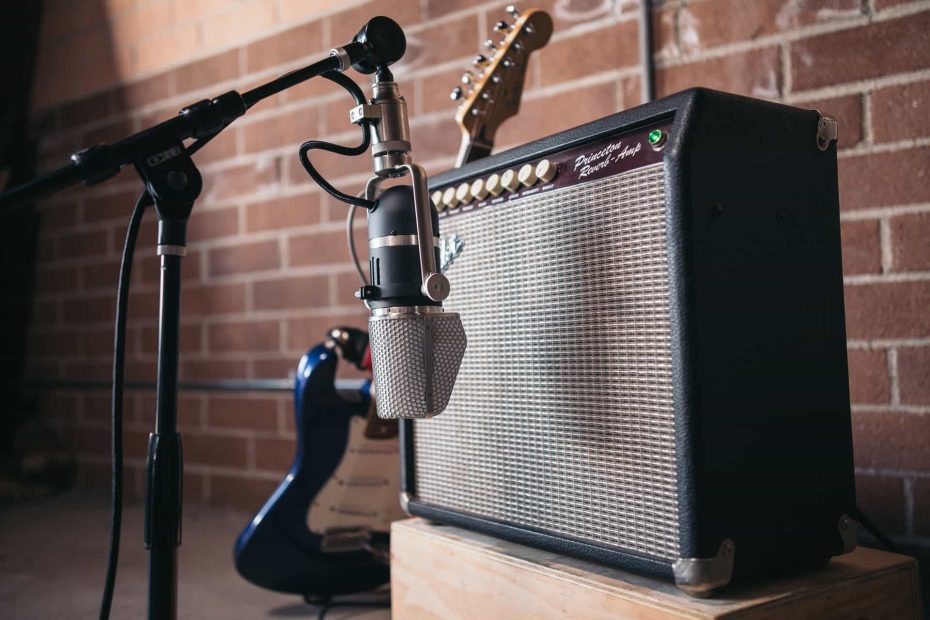This article is about the truth-revealing moment that is walking for the first time in a recording session with full confidence in your skills and facing the harsh facts “Playing guitar in the studio is harder than live.”
I’ll also share some tips on how to overcome the initial struggles
Does this happen to you too?
You walk into the session with pride in the solo and rhythm you’ve worked on for your song or the song you were hired to play at. As always, you get that usual nice tone.
Right when you start recording guitar, these things happen:
- You are great, and if so, don’t read this article
- You thought it was great, but for the producer, it’s a total no
- You can’t get it right like on the show and something off!
- That metronome is throwing you off.
If you are like me and fall under the last 3 – then welcome to the club, and this article is for you!
Why is playing guitar in the studio hard?
This question is as broad as the question beginner guitar players make “how fast can I learn to play guitar” to which we all gently reply – you never stop learning!
The general pain points are:
- You have problems with keeping time and counting time signatures
- You are very much “lick-focused.”
- You don’t have sound enough/mixing engineering training
- Your playing dynamics need some work
It might be one of them; it might be all of them! The more you have, the best my tips, in the end, will fit you.
Learn to count and play on time
Easy fix for this one – “Practice with a metronome” is typical. I’d like to take it further and have you play songs and solos you already know with just a click. Figure out whatever tempo you find fitting and us play them through many times, then change the speed of it and do that again.
Good thing is that the guitar is an instrument that can move a bit ahead or behind the beat and still sound very cool, even cooler in certain aspects.
What I mean by learning to count is that you should try first to count where the guitar comes in at certain spots if you find it difficult to enter just by the feel of it. Sometimes there is no time to get the feel of the song, and you really have to count on counting…lol.
Always move some part of your body while recording! Feeling the beat is a must for recording musicians. I move my head to the beat in a weird way. Finds yours, and don’t stop!
A simple trick – Follow the snare! It’s the easiest beat to catch up on, and make sure you hit when it hits.
Improve your timing, and you will know why playing guitar in the studio is harder than live performances for most guitar players.
Your playing is very much “lick focused.”
This still haunts me if I don’t have a specific “routine” to stop it. What I mean by lick-focused is that when a solo has to be written or fills to be added, the first thing you go to is a classic blues/rock lick you always go for first. That just doesn’t work in the studio.
Serving the song means analyzing musically and sonically with your inner ear and through your musical vocabulary. The way I avoid this way of approaching the song is by following the steps.
- Listen to the song once full to get the context
- Listen again and start mumbling lines
- Do that again until you find a nice “hook” or melody, riff
- Add your own licks to that main hook and improvise over the track many times
- Find the parts that work best after each take and mix them up
The secret to writing a great guitar part is writing it before playing it on the guitar.
You don’t have enough audio/mixing engineering training.
This is a whole other discussion itself – but I can start to share some basics here. In the words of the great session player Tim Pierce
“I see a song as a set of frequencies and imagine the guitar filling those frequencies.”
What Tim means is that by hearing a song, you know where the bass/Vocals/Drums and other instruments are sonically, what frequencies they occupy, etc. Knowing which frequency is full lets you know which ones to fill with your guitar.
A simple example is overdrive rhythm guitars on an electronic song! Most of the time, that is a no; why? Cause the synths occupy the space that the guitar usually takes.
The way you practice this skill is by performing active listening and hearing each instrument individually than regularly working on your own guitar mixes. It’s a process that takes time, but it’s a skill that can be achieved like any other.
Another aspect of the sonic part is your tone! In a live situation, you enjoy a lot those low minds and lots of delay and reverb. The studio is a bit different. You are expected to have a tone that fits in the mix and doesn’t make it muddy. Of course, the mixing engineer will cut up most of your tone if you can’t have a mix-ready tone.
If you ask an engineer or producer, “why is playing guitar in the studio hard” – they will mostly say because most guitar players know nothing about mixing!
Remember that your task is to play everything so clean that the DI sounds perfect without any effects at all.
Also, there is that part where you need to send some rough mixes to the clients when you work remotely. And they better be not that rough. A good guitar track on a bad mix can sound horrible.
You need some work on dynamics
What I mean by this is not only picking strength which is a must, but the total approach you have to the song. If for example, the verses are soft and build up tension until the song explodes on the chorus, then the guitar has to do that too.
A typical scenario in rock music is that the second verse is usually more packed with guitar riffs and licks. If you are a smart session player, you know that you have to save up your best trick for the chorus and second verse and play softly without much “intension” on the other part.
Know when to step up, but mostly you should know when to back down
Guitar players are emotional creatures that want all attention for themselves. Don’t be that guy! Study many songs and listen closely to what the guitar is doing. If there is no guitar, that analyses why. The silence between your playing is as important as what you play.
Check out my lesson below on some essentials of applying dynamics to soloing.
To recap – what makes playing guitar in the studio so hard?
Playing guitar in the studio is harder than live not because it’s that by nature but because you have to wire your brain differently in a studio and apply a new set of skills. There is no crowd to entertain but a song that needs to be served. Think that and study songs musically and sonically.
If you want to discuss some points of this, please contact me or check out some of my session work to hear how I apply my tips.
I always deliver quality guitar tracks but remote work allows me to also have a MONEY BACK policy if for any reason you are not satisfied.

